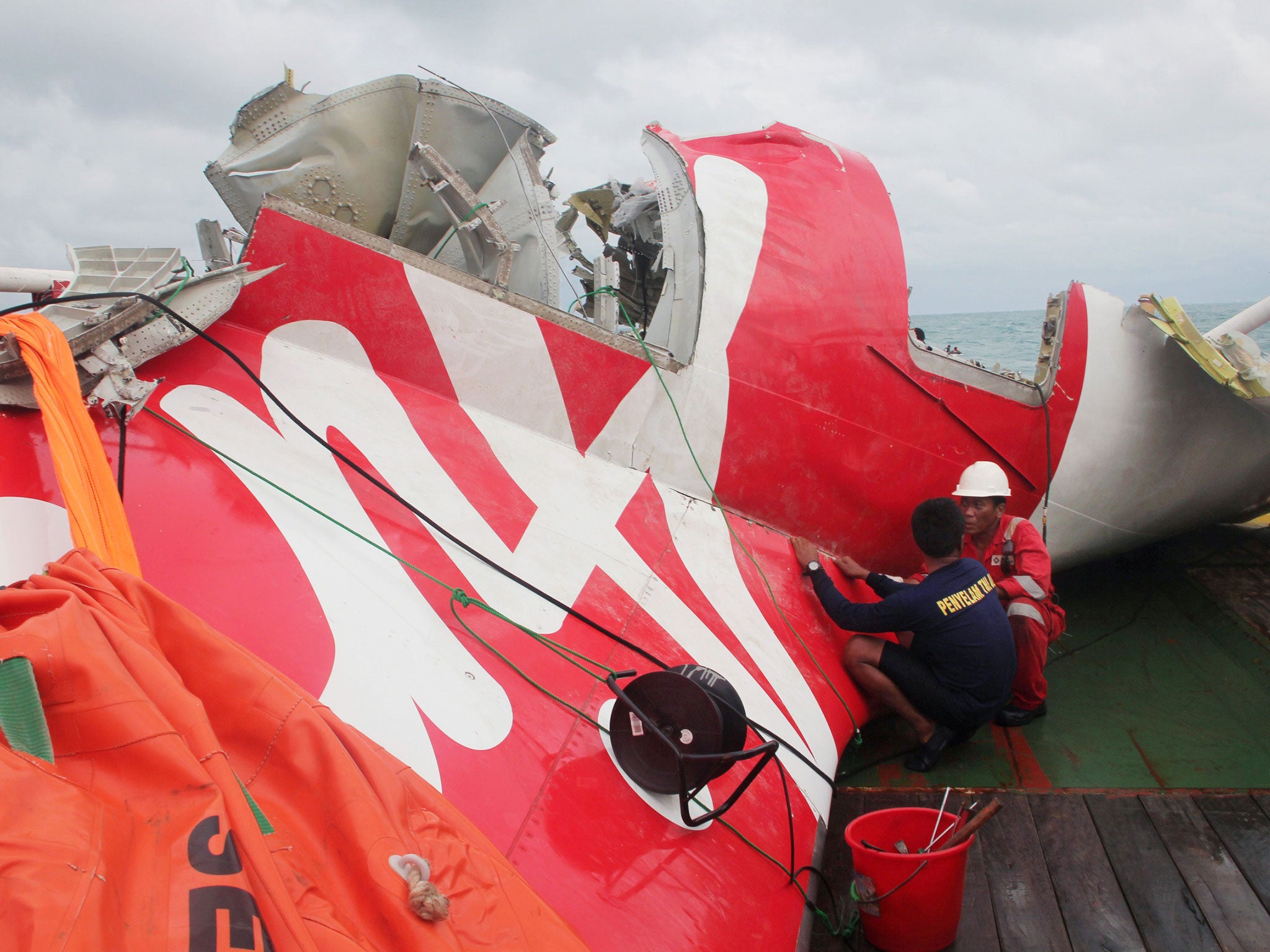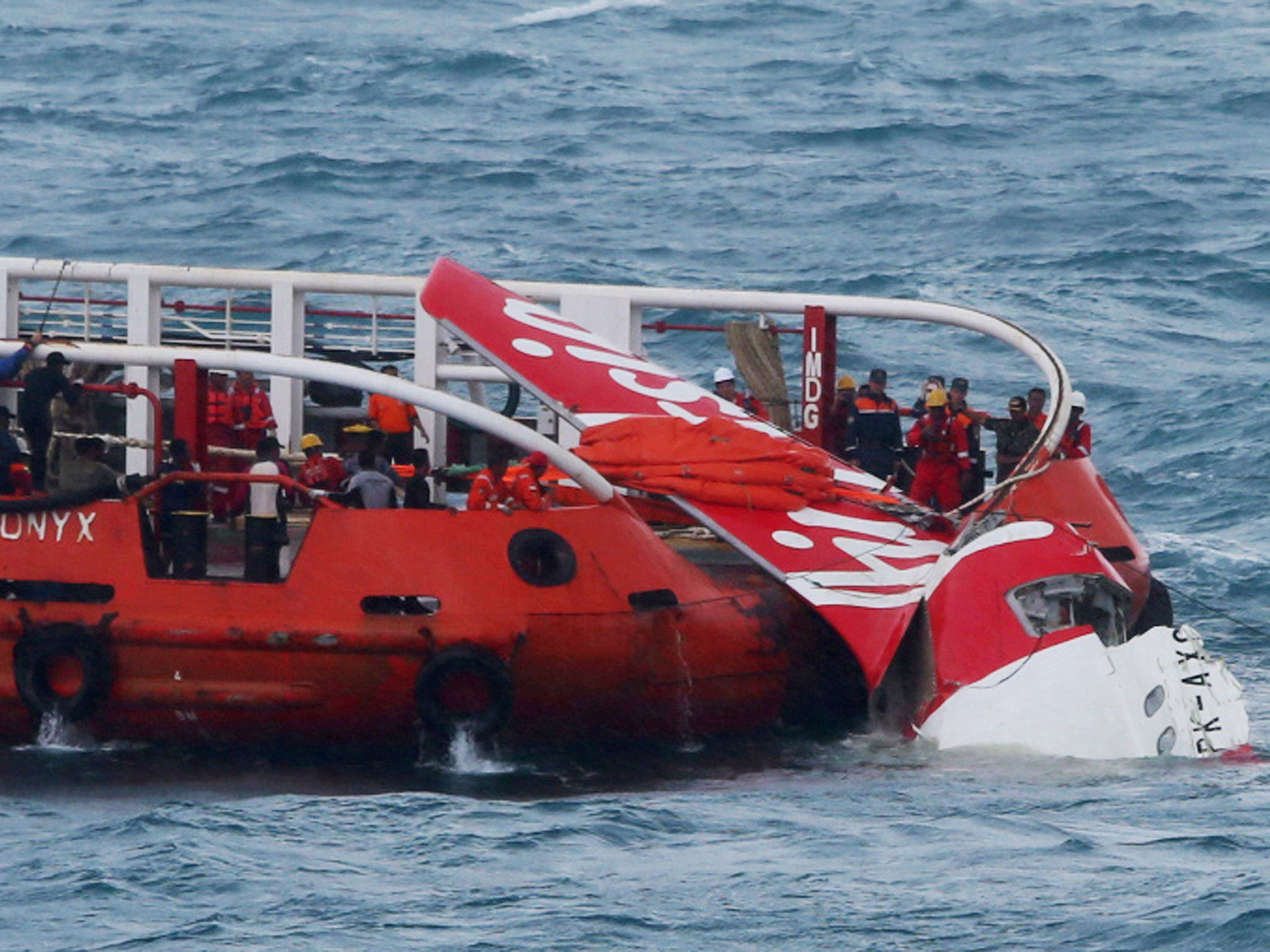AirAsia flight QZ8501: 'No evidence' yet to suggest pilot left seat before crash
Investigators also say they have not found evidence power to an automated control system was shut off

Your support helps us to tell the story
From reproductive rights to climate change to Big Tech, The Independent is on the ground when the story is developing. Whether it's investigating the financials of Elon Musk's pro-Trump PAC or producing our latest documentary, 'The A Word', which shines a light on the American women fighting for reproductive rights, we know how important it is to parse out the facts from the messaging.
At such a critical moment in US history, we need reporters on the ground. Your donation allows us to keep sending journalists to speak to both sides of the story.
The Independent is trusted by Americans across the entire political spectrum. And unlike many other quality news outlets, we choose not to lock Americans out of our reporting and analysis with paywalls. We believe quality journalism should be available to everyone, paid for by those who can afford it.
Your support makes all the difference.Indonesian air crash investigators say they have not yet found evidence that the pilot of an AirAsia jet had left his seat, shortly before the aircraft crashed into the sea, killing all 162 people on board.
The investigators also say they have not found evidence power to an automated control system was shut off before the Airbus A320 plunged into the Java Sea, Reuters reports.
A team has been examining the flight data recorders recovered from the aircraft in a bid to determine the cause of the crash.
It followed comments from two sources familiar with the investigation who had told the news agency that Captain Iriyanto was out of his seat and conducting the “unusual procedure” of pulling the circuit-breaker on a flight computer when his co-pilot apparently lost control of the aircraft.
AirAsia flight QZ8501 vanished on 28 December less than an hour into a two hour trip from Surabaya, in Indonesia, to Singapore. On Tuesday, rescuers recovered six more bodies from the plane's fuselage, which is about 30 metres (100 ft) below water bringing the total to 89.
"Up until today, there is no indication yet that the captain left his seat as reported by Reuters," Ertata Lananggalih, an investigator with the National Transportation Safety Committee (NTSC), said.
On Friday, Bloomberg News reported that the pilots of the crashed plane had tried to reset the FAC during the flight, and had then pulled a circuit-breaker to cut power to the device.
But investigators are now disputing whether the circuit break was pulled.
The NTSC would not comment any further because the accident was still under investigation.

However, a document prepared by the investigation team reportedly indicated the FAC system and the cockpit circuit breakers as among the issues of interest to investigators.
The schedule document listed among more than 30 items for discussion. Along with more general points such as "wreckage recovery" and "maintenance review", it included the entry "FAC engagement and failure understanding" and another entry related to pulling "CB", a common abbreviation for circuit-breakers.
Tatang Kurniadi, chief of the NTSC said the list is "just [an] inventory" designed to make the probe easier.
"It is not just circuit breakers. This is the first plan...it could change again because of developments. This was prepared in the first week of the investigation," he said.
The checklist made no mention of pilot seats or movements in the cockpit.
Investigators have said it was too early to say whether the accident involved pilot error or a mechanical fault.
AirAsia declined to comment. The airline said previously it would not comment while the crash was under investigation by the NTSC.
Additional reporting by Reuters
Join our commenting forum
Join thought-provoking conversations, follow other Independent readers and see their replies
Comments